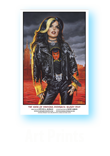
Welcome back to
Simian Saturdays, a series of reviews that examine the movies (and other media) that focused on King Kong, the giant monkey that captured generations of monster fans’ hearts. It’s part of our countdown to the March 7 release of
King Kong, the next addition to our Illustrated Classics library.
King Kong is an e-book exclusive that will reintroduce monster fans to the 1932 novelization of the original movie classic. Written by Delos W. Lovelace, based on the story by Edgar Wallace and Merian C. Cooper and the screenplay by James A. Creelman and Ruth Rose, it includes scenes that didn’t appear in the final cut of the film—including the notorious “spider pit” sequence in which Kong’s human pursuers are attacked by horrific arachnids and insects. Our version features six original black-and-white illustrations by comics artist Paul Tuma, whose pulp-influenced style has appeared in the pages of The Twilight Avenger, Flare, and Dan Turner: Hollywood Detective.
 Not familiar with the beauty-and-the-beast story of Kong and his “love interest,” Ann Darrow (who was played in the 1933 original by the queen of the scream queens, Fay Wray)? Well, here’s our edition’s back-cover copy to bring you up-to-date:
Not familiar with the beauty-and-the-beast story of Kong and his “love interest,” Ann Darrow (who was played in the 1933 original by the queen of the scream queens, Fay Wray)? Well, here’s our edition’s back-cover copy to bring you up-to-date:
Ann Darrow was a down-on-her-luck actress struggling to survive in Depression-era New York when she met moviemaker Carl Denham. He offered her the starring role in his latest film: a documentary about a long-lost island—and the godlike ape named Kong rumored to live there. Denham needed a beauty as a counterpart to the beast he hoped to find, and Ann was the answer to his prayers.
Mystery, romance, a chance to turn her life around, even the possibility of stardom—to Ann, it sounded like the adventure of a lifetime! But what she didn’t count on were the horrific dangers that awaited her on Skull Island—including the affections of a love-struck monster . . .
 Today we’re viewing the 1976 version of King Kong, starring Jeff Bridges (Iron Man), Charles Grodin (Midnight Run), makeup effects artist Rick Baker as Kong (he wore the gorilla suit), and introducing Jessica Lange (American Horror Story) in her big-screen debut as Dwan (no, not Dawn). Produced by Dino De Laurentiis—a bombastic, Carl Denham–esque figure in his own right—the screenplay by Lorenzo Semple Jr. (Adam West’s Batman series, 1980’s Flash Gordon remake) adapted and updated the Creelman-Rose screenplay for contemporary audiences.
Today we’re viewing the 1976 version of King Kong, starring Jeff Bridges (Iron Man), Charles Grodin (Midnight Run), makeup effects artist Rick Baker as Kong (he wore the gorilla suit), and introducing Jessica Lange (American Horror Story) in her big-screen debut as Dwan (no, not Dawn). Produced by Dino De Laurentiis—a bombastic, Carl Denham–esque figure in his own right—the screenplay by Lorenzo Semple Jr. (Adam West’s Batman series, 1980’s Flash Gordon remake) adapted and updated the Creelman-Rose screenplay for contemporary audiences.
A little background, first, that actually connects with how StarWarp Concepts is re-publishing the 1932 novelization. In the early seventies, De Laurentiis announced his intention to remake King Kong, and started negotiating the rights with property owner (and Kong’s original studio) RKO. Universal Studios, which was considering its own remake—to be titled The Legend of King Kong—also started negotiating with RKO. When RKO went with De Laurentiis’s offer, Universal sued him and RKO. The suit was dismissed, but Universal then discovered that Lovelace’s novelization had slipped into the public domain (PD) years before, and argued that their remake would be based on the elements of the PD book, not the ’33 classic. (Truly a matter of splitting hairs, since the novelization was based on an early draft of the Creelman/Rose screenplay.) Then RKO countersued Universal on copyright grounds.
Eventually, Universal and De Laurentiis settled their disagreements through negotiation and Universal gave up its plans for The Legend of King Kong—but still insisted, in their suit against RKO, that the novelization was PD and asked for a ruling on that matter, in the hopes of, perhaps, someday producing a Kong feature. In September 1976, the presiding judge ruled in Universal’s favor by agreeing that the novelization was PD “by reason of an improper copyright,” which meant that Universal could make their movie (which they eventually did, three decades later, with Peter Jackson). It also meant that it could be published in book or serialized form by anyone—like, for instance, StarWarp Concepts. And now you know!
(For the full behind-the-scenes story on this court case, track down a copy of Ray Morton’s King Kong: The History of a Movie Icon from Fay Wray to Peter Jackson [Applause Theatre and Cinema Books, 2005].)
Anyway, let’s talk King Kong 1976!
The world is undergoing an energy crisis—a real event in the 1970s caused by a lack of available petroleum and rising prices—and the Petrox Oil Company is out to beat competitors like Exxon in the hunt for new oil sources. Leading the charge is Fred Wilson (played by Charles Grodin), a dickish Petrox executive who’s found evidence of an uncharted island in the Indian Ocean—an island he’s certain is brimming over with untapped petroleum reserves—and he convinces his bosses to let him lead an expedition. Tagging along—in other words, stowing away on the company ship—is Jack Prescott (Jeff Bridges), a primate paleontologist who wants to check out the island. During the voyage the ship comes across a life raft; its sole occupant is Dwan (Jessica Lange), an aspiring actress who was a passenger on a yacht that exploded.
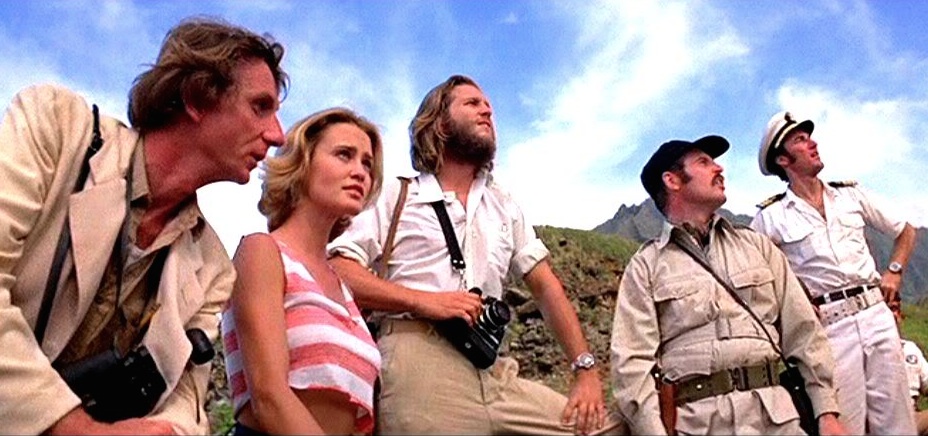
Left to right: Rene Auberjonois, Jessica Lange, Jeff Bridges, Charles Grodin, Ed Lauter
From that point on, the movie follows most of the beats established in the 1933 original: the crew arrives on the island and interrupts the natives’ ceremony for the intended “bride” of Kong; they kidnap Dwan as the replacement sacrifice (though here no reason is given as to why the natives need her specifically); Kong carries her off to his mountain hideaway; the ship crew, led by the hero (in this case, Prescott), sets out in pursuit, and Kong wipes out most of them by tossing them off a log over a canyon (no spider pit scene, here, either); Prescott gets to Dwan and takes her back to camp with Kong on his heels; and Kong is captured and brought to New York to meet his fate. Only here Kong climbs to the top of the World Trade Center instead of the Empire State Building.
Where things go wrong is Semple’s script. Although he was lauded for his work on such dramatic films as Papillion, Three Days of the Condor, and The Drowning Pool, Lorenzo Semple is also the man who helped establish the campy tone of the 1966 Batman TV series starring Adam West—a tone he unfortunately carried over to such later movies as 1980’s Flash Gordon, 1984’s Sheena, Queen of the Jungle…and King Kong.
Via Semple, Wilson is a loudmouthed caricature of a company executive, a far cry from Robert Armstrong’s showman-explorer Carl Denham in the original Kong. Prescott is the stereotypical longhaired, enthusiastically vocal environmental defender. And Dwan is the bubbly, airheaded starlet who babbles about horoscopes and spouts such cringe-worthy lines as “Did you ever meet anyone whose life was saved by [pornographic movie] Deep Throat?” No one would ever confuse her for Fay Wray’s world-weary but adventurous Ann Darrow. Even the oil company name Petrox practically screams that Semple is trying to be cute, no doubt naming it as a wink to the fad for Pet Rocks (literally a rock in a box) that gripped the US at the time he was working on the screenplay.
Effects-wise, Kong is literally a man in a monkey suit (played by effects master Rick Baker, in a suit he designed with Carlo Rambaldi) making sexy googly eyes at the somewhat airheaded blonde who’s stolen his heart. It looks comically awful—especially in a scene in which Dwan takes a mountain shower and Kong actually blows on her to dry her off (whaaat?)—and has aged terribly in the forty years since then.
Worse yet, the only monster that Kong fights on the unnamed island (it’s never referred to as Skull Island, although an infrared satellite picture shows it has a skull shape) is a crappy-looking giant snake—no T-Rexes, no pterodactyls, not even a triceratops to bellow at. Boo, I say.
Bottom line? It’s a pretty bad remake, marred by paper-thin characters, bad dialogue, and a serious lack of dinosaur fights. Stick to the original Kong and give this one a pass.
King Kong (1976)
Starring Jessica Lange, Jeff Bridges, and Charles Grodin
Directed by John Guillermin
Screenplay by Lorenzo Semple Jr.
Based on the screenplay by James A. Creelman and Ruth Rose
Produced by Dino De Laurentiis Company
Coming Next Saturday: The twenty-first century has arrived, and the one visionary believed perfect for the job of bringing a new Kong to the big screen is a major Kong fanboy who also happens to have been the man who found a way to make the epic fantasy The Lord of the Rings a major box-office success. It’s writer/director/producer Peter Jackson’s 2005 remake of King Kong, next on Simian Saturdays—see you then!
King Kong (the SWC edition) goes on sale on March 7, 2017. In the meantime, visit its product page for further information.
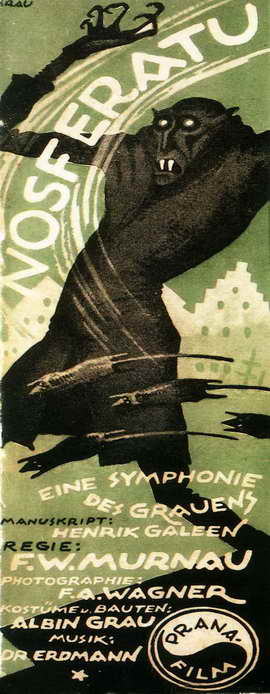 Okay, I’m a day late in celebrating it—I had to finish my review of King Kong 2005 for the latest (and also late) installment of Simian Saturdays—but yesterday, March 4, was the 95th anniversary of the day in 1922 when German movie-going audiences were introduced to, and horrified by, Count Graf Orlok, the vampiric star of director F.W. Murnau’s Nosferatu: A Symphony of Horror. (It took another seven years before the film reached America.)
Okay, I’m a day late in celebrating it—I had to finish my review of King Kong 2005 for the latest (and also late) installment of Simian Saturdays—but yesterday, March 4, was the 95th anniversary of the day in 1922 when German movie-going audiences were introduced to, and horrified by, Count Graf Orlok, the vampiric star of director F.W. Murnau’s Nosferatu: A Symphony of Horror. (It took another seven years before the film reached America.)
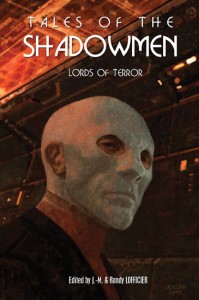 Speaking of Count Orlok, I’ve made some use of that blood-drinking monster in my own work. His is one of the vampire clans featured in the Saga of Pandora Zwieback novels Blood Feud and Blood Reign (and the upcoming Blood & Iron)—although I spell it Orlock there—and he made an appearance in a short story I wrote for the Black Coat Press anthology Tales of the Shadowmen 4: Lords of Terror (later reprinted in BCP’s The Vampire Almanac, Vol. 2).
Speaking of Count Orlok, I’ve made some use of that blood-drinking monster in my own work. His is one of the vampire clans featured in the Saga of Pandora Zwieback novels Blood Feud and Blood Reign (and the upcoming Blood & Iron)—although I spell it Orlock there—and he made an appearance in a short story I wrote for the Black Coat Press anthology Tales of the Shadowmen 4: Lords of Terror (later reprinted in BCP’s The Vampire Almanac, Vol. 2).
 Okay, we’re a day late—sorry about that—but welcome back to
Okay, we’re a day late—sorry about that—but welcome back to  Not familiar with the beauty-and-the-beast story of Kong and his “love interest,” Ann Darrow (who was played in the 1933 original by the queen of the scream queens, Fay Wray)? Well, here’s our edition’s back-cover copy to bring you up-to-date:
Not familiar with the beauty-and-the-beast story of Kong and his “love interest,” Ann Darrow (who was played in the 1933 original by the queen of the scream queens, Fay Wray)? Well, here’s our edition’s back-cover copy to bring you up-to-date: Today we’re viewing the 2005 remake of
Today we’re viewing the 2005 remake of 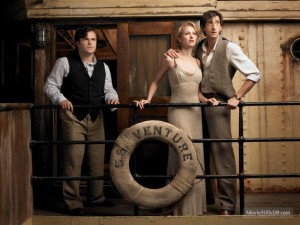
 Since 2002, March 4th has been well known to the gaming community as International GM’s [Game Masters] Appreciation Day. Never heard of it? Well, that’s probably because, like me, you’re not involved in that ever-growing collection of fans. To explain this event, I’ll let this quote from the official GM’s Day site provide you with some background:
Since 2002, March 4th has been well known to the gaming community as International GM’s [Game Masters] Appreciation Day. Never heard of it? Well, that’s probably because, like me, you’re not involved in that ever-growing collection of fans. To explain this event, I’ll let this quote from the official GM’s Day site provide you with some background:
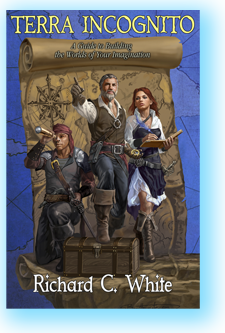 Terra Incognito: A Guide to Building the Worlds of Your Imagination
Terra Incognito: A Guide to Building the Worlds of Your Imagination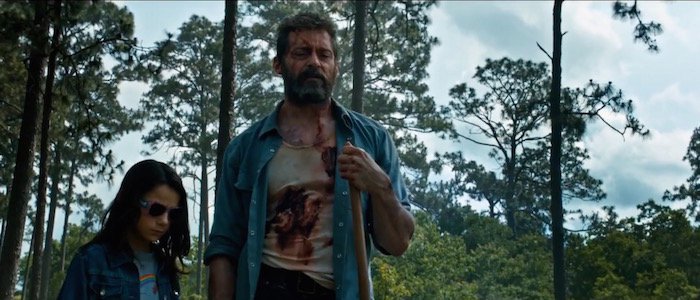
 And speaking of character-driven X-Men stories, I’m reminded of
And speaking of character-driven X-Men stories, I’m reminded of  That’s right, it was 84 years ago today, on March 2, 1933, that New York movie audiences were introduced to, and terrified by, the Eighth Wonder of the World:
That’s right, it was 84 years ago today, on March 2, 1933, that New York movie audiences were introduced to, and terrified by, the Eighth Wonder of the World: 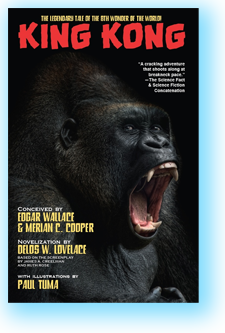 Not familiar with the beauty-and-the-beast story of Kong and his “love interest,” Ann Darrow (who was played by the queen of the scream queens, Fay Wray)? Well, here’s our edition’s back-cover copy to bring you up-to-date:
Not familiar with the beauty-and-the-beast story of Kong and his “love interest,” Ann Darrow (who was played by the queen of the scream queens, Fay Wray)? Well, here’s our edition’s back-cover copy to bring you up-to-date: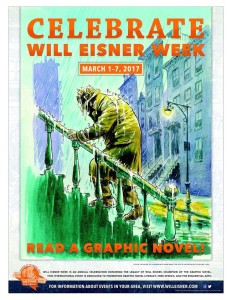
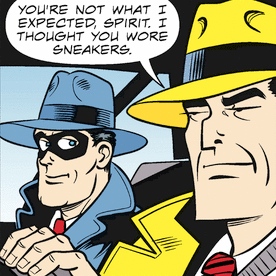 (By the way, in case you were unaware, since December 26, 2016 and up to the present, The Spirit has been guest-starring in the Dick Tracy comic strip—these days written by Mike Curtis and drawn by comic-art legend Joe Staton—in a storyline involving an immortality formula up for auction. Among the bidders: the Dragon Lady from Terry and the Pirates and Daddy Warbucks from Little Orphan Annie! You can start with Day One of the crossover by heading over to the
(By the way, in case you were unaware, since December 26, 2016 and up to the present, The Spirit has been guest-starring in the Dick Tracy comic strip—these days written by Mike Curtis and drawn by comic-art legend Joe Staton—in a storyline involving an immortality formula up for auction. Among the bidders: the Dragon Lady from Terry and the Pirates and Daddy Warbucks from Little Orphan Annie! You can start with Day One of the crossover by heading over to the 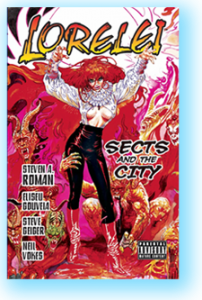
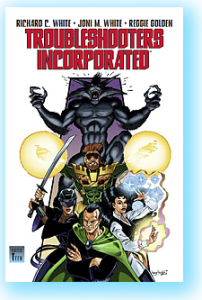
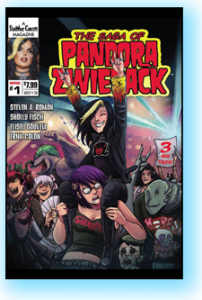 The Saga of Pandora Zwieback Annual #1
The Saga of Pandora Zwieback Annual #1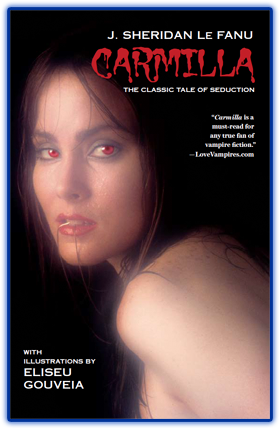 One hundred and forty-five years ago, J. Sheridan Le Fanu’s classic vampire tale,
One hundred and forty-five years ago, J. Sheridan Le Fanu’s classic vampire tale, 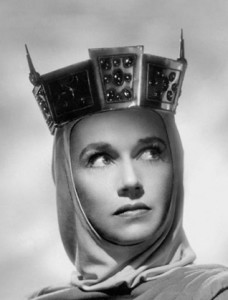
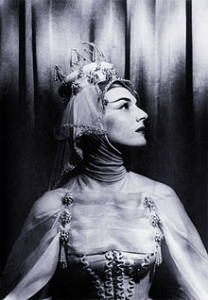
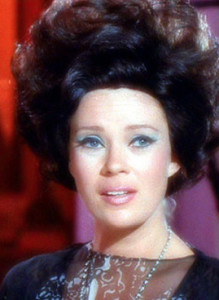
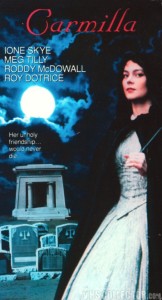 In September 1989, the short-lived Showtime series
In September 1989, the short-lived Showtime series 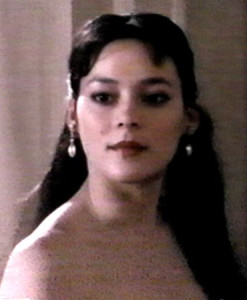
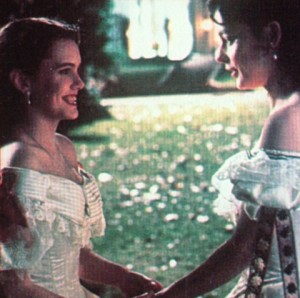
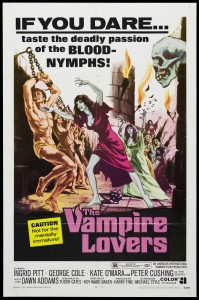 Today we’re taking a look at one of those movies:
Today we’re taking a look at one of those movies: 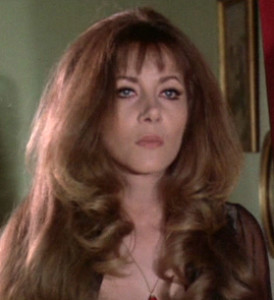
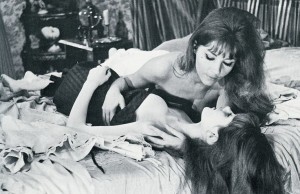
 Today we’re viewing the 1976 version of
Today we’re viewing the 1976 version of 
